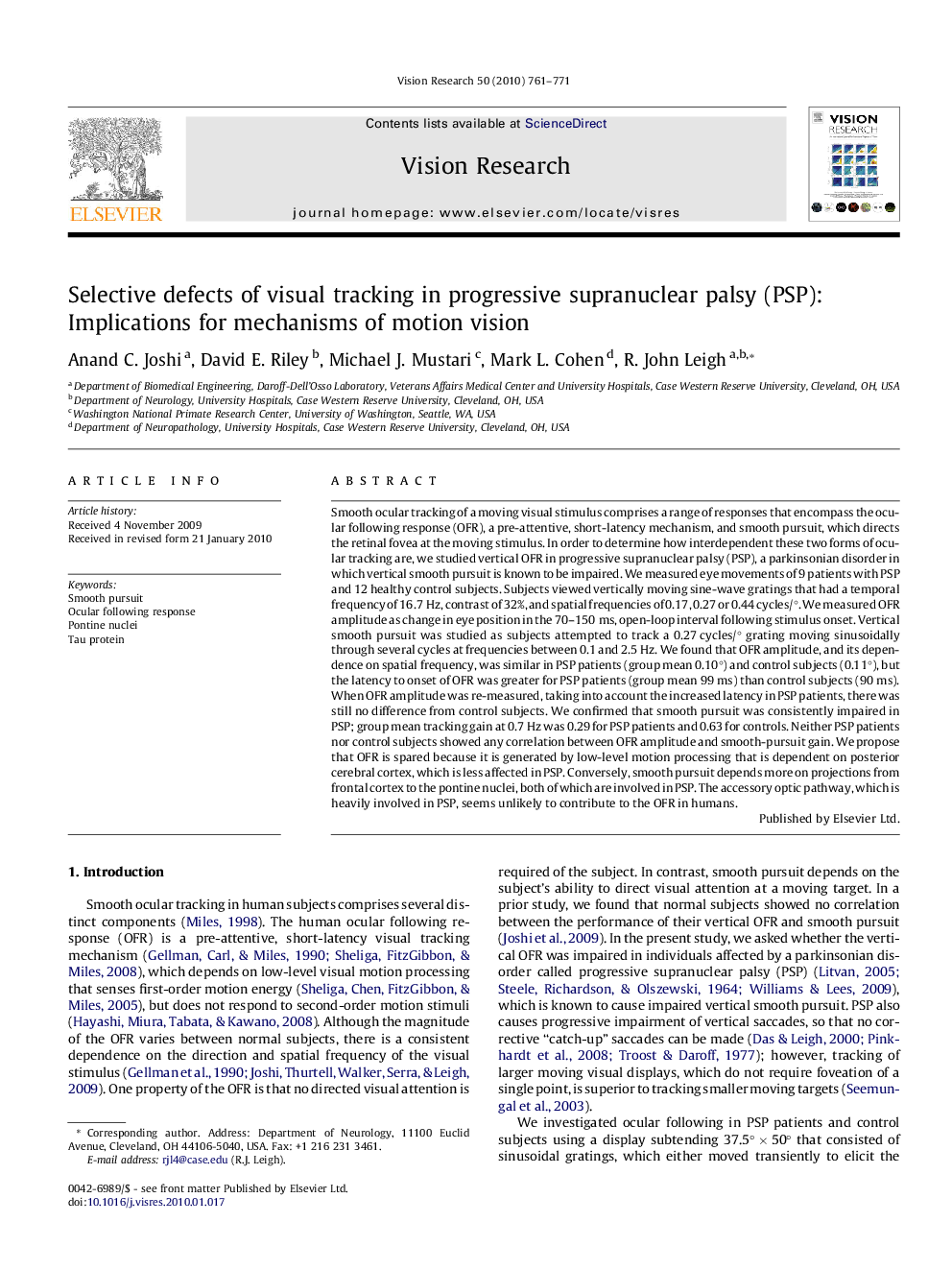| کد مقاله | کد نشریه | سال انتشار | مقاله انگلیسی | نسخه تمام متن |
|---|---|---|---|---|
| 6203845 | 1263458 | 2010 | 11 صفحه PDF | دانلود رایگان |

Smooth ocular tracking of a moving visual stimulus comprises a range of responses that encompass the ocular following response (OFR), a pre-attentive, short-latency mechanism, and smooth pursuit, which directs the retinal fovea at the moving stimulus. In order to determine how interdependent these two forms of ocular tracking are, we studied vertical OFR in progressive supranuclear palsy (PSP), a parkinsonian disorder in which vertical smooth pursuit is known to be impaired. We measured eye movements of 9 patients with PSP and 12 healthy control subjects. Subjects viewed vertically moving sine-wave gratings that had a temporal frequency of 16.7 Hz, contrast of 32%, and spatial frequencies of 0.17, 0.27 or 0.44 cycles/°. We measured OFR amplitude as change in eye position in the 70-150 ms, open-loop interval following stimulus onset. Vertical smooth pursuit was studied as subjects attempted to track a 0.27 cycles/° grating moving sinusoidally through several cycles at frequencies between 0.1 and 2.5 Hz. We found that OFR amplitude, and its dependence on spatial frequency, was similar in PSP patients (group mean 0.10°) and control subjects (0.11°), but the latency to onset of OFR was greater for PSP patients (group mean 99 ms) than control subjects (90 ms). When OFR amplitude was re-measured, taking into account the increased latency in PSP patients, there was still no difference from control subjects. We confirmed that smooth pursuit was consistently impaired in PSP; group mean tracking gain at 0.7 Hz was 0.29 for PSP patients and 0.63 for controls. Neither PSP patients nor control subjects showed any correlation between OFR amplitude and smooth-pursuit gain. We propose that OFR is spared because it is generated by low-level motion processing that is dependent on posterior cerebral cortex, which is less affected in PSP. Conversely, smooth pursuit depends more on projections from frontal cortex to the pontine nuclei, both of which are involved in PSP. The accessory optic pathway, which is heavily involved in PSP, seems unlikely to contribute to the OFR in humans.
Journal: Vision Research - Volume 50, Issue 8, 7 April 2010, Pages 761-771